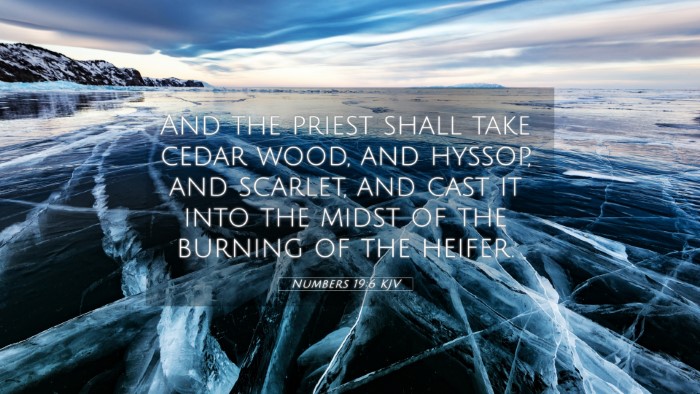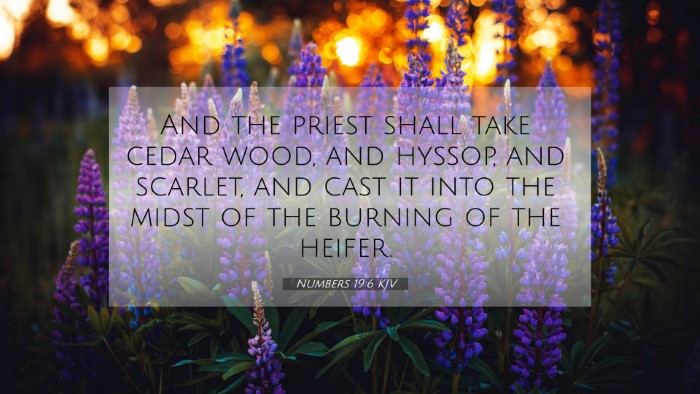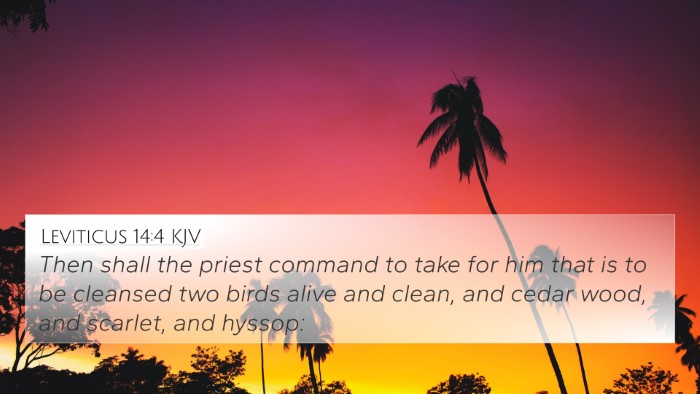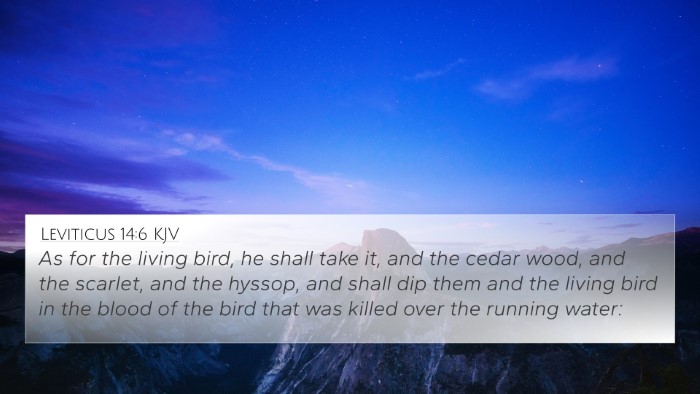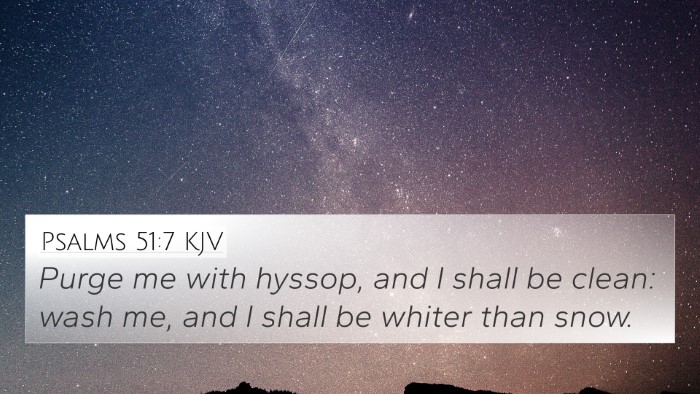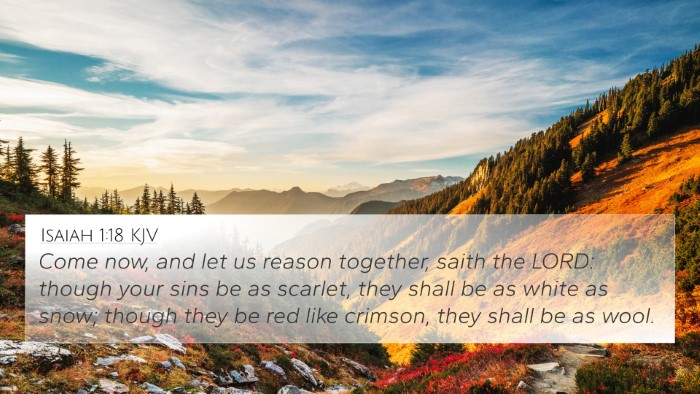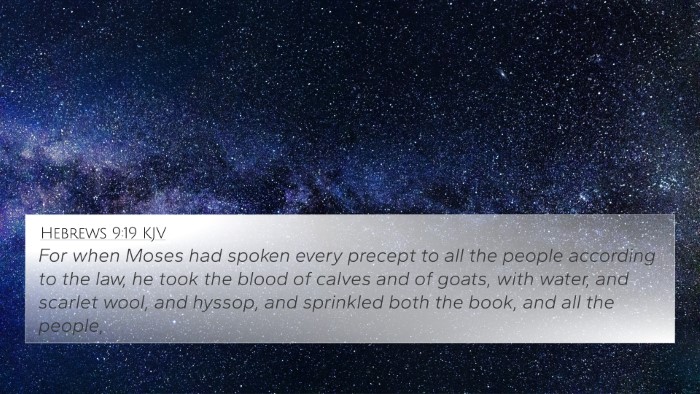Understanding Numbers 19:6
Verse Reference: Numbers 19:6 - "And the priest shall take cedar wood, and hyssop, and scarlet, and cast it into the midst of the burning of the heifer."
Overview and Significance
This verse is part of the law concerning the red heifer, a key ritual in the purification process in ancient Israel. The elements mentioned—cedar wood, hyssop, and scarlet—hold symbolic significance that connects to both the ritual's purpose and broader biblical themes.
Commentary Insights
- Matthew Henry: He emphasizes the idea of cleansing and the use of these materials as representing the purification of sin. Each item has its significance; cedar wood is known for its durability and fragrance, symbolizing strength and life, while hyssop is often used in contexts of purification, such as in Psalm 51:7. The scarlet thread represents the blood of Christ, illustrating the connection between sacrifice and redemption.
- Albert Barnes: Barnes reflects on the practical aspects of this sacrificial system and highlights that the burning of the heifer symbolizes the complete consumption of sin. The combination of ingredients shows a divine orchestration meant to emphasize the sacredness of the cleansing ritual.
- Adam Clarke: Clarke delves into the symbolic interpretations of each material. He explains how hyssop, used during the Passover, is significant for its association with cleansing and sacrifice, establishing a thematic continuity with the atonement established in the New Testament.
Connections and Cross-References
Numbers 19:6 connects with various other scriptures, reflecting themes of purification, sacrifice, and redemption:
- Hebrews 9:13-14: Discusses the blood of goats and calves, linking to the sacrificial theme and the ultimate sacrifice of Christ.
- Psalm 51:7: "Purge me with hyssop, and I shall be clean" - directly ties hyssop to the act of spiritual cleansing.
- Exodus 12:22-23: The use of hyssop in the Passover event makes it a central symbol of protection and salvation.
- 1 Peter 1:19: Emphasizes the redemptive value of Christ’s blood, drawing a parallel to the scarlet mentioned in Numbers.
- Leviticus 14:4-7: Details the cleansing of a leper, incorporating cedar and hyssop in purification rites.
- Matthew 27:28: The scarlet robe placed on Jesus as part of the mockery portrays the connection to themes of humiliation and sacrifice.
- Revelation 7:14: Represents the washing of robes in the blood of the Lamb, bridging the theme of cleansing through sacrifice.
Thematic Connections
The elements in Numbers 19:6 are not merely for ritual; they provide a poetic and thematic linkage across the Scriptures. Below are some key themes this verse communicates:
- Purification: Cross-referencing biblical texts reveals an emphasis on spiritual cleansing, particularly through the elements used in this sacrificial rite.
- Sacrifice as Atonement: The red heifer's offering foreshadows the ultimate sacrifice, aligning with New Testament teachings on atonement.
- Divine Instruction: Highlighting that the process is a matter of obedience to God's commands, reinforcing the importance of following divine guidelines in worship.
Tools for Bible Cross-Referencing
Understanding Numbers 19:6 and its connections benefits from various tools and methods:
- Utilizing a Bible concordance can aid in identifying related verses and themes.
- A cross-reference Bible study allows for an in-depth look at the connections between this verse and other scriptures.
- Engaging with a Bible cross-reference guide can enhance comprehension of thematic links across Testaments.
Conclusion
Numbers 19:6 serves as a significant part of the ritual law in the Old Testament, tightly woven into the fabric of biblical themes concerning purification and redemption. The careful selection of materials signifies not just a ritual but also God's overarching plan for atonement, encapsulating the essence of inter-Biblical dialogue. This verse invites deeper exploration of how individual scriptures relate to each other, ultimately leading to a fuller understanding of God's redemptive story through Christ.

